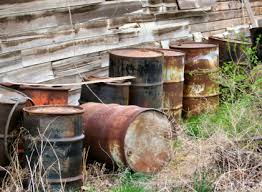 A Phase 1 Environmental Site Assessment is part of a report prepared for a real estate holding that identifies potential or existing environmental contamination liabilities. The Phase 1 Environmental Site Assessment is the first step in the process of environmental due diligence and involves a review of records, site inspection and interviews with owners, occupants, neighbors and local government officials, but does not typically include actual sampling of soil, air, groundwater or building materials. The below article written by Rick Leighton for NAI Global details additional information about what a Phase 1 Environmental Site Assessment is, and what it isn’t:
A Phase 1 Environmental Site Assessment is part of a report prepared for a real estate holding that identifies potential or existing environmental contamination liabilities. The Phase 1 Environmental Site Assessment is the first step in the process of environmental due diligence and involves a review of records, site inspection and interviews with owners, occupants, neighbors and local government officials, but does not typically include actual sampling of soil, air, groundwater or building materials. The below article written by Rick Leighton for NAI Global details additional information about what a Phase 1 Environmental Site Assessment is, and what it isn’t:
What is a Phase 1 Environmental Site Assessment?
A Phase 1 Environmental Site Assessment should be an integral step in acquiring commercial and/or industrial property. So what is a Phase 1 Environmental Site Assessment, sometimes referred to as a “Phase 1 or a Phase 1 ESA”?
A Phase 1 Environmental Site Assessment is a report that summarizes a site visit and records review of a property and its surrounding area to determine if any additional environmental investigation is warranted to understand the liability risks associated with the identified property. It should follow and adhere to ASTM Standard 1527-13.
Below is a quick summary of key activities [and process] generally associated with a Phase 1 Environmental Site Assessment:
Purpose of a Phase 1 Environmental Assessment
The purpose of a Phase 1 Environmental Site Assessment is to use a consistent systematic approach the industry recognizes to identify any existing or potential environmental conditions that may be present or affect a real estate property.
The process of completing a Phase 1 Environmental Site Assessment has four components:
1. Records Review
- Historical uses. What has the property been used for in the past? Are there any uses that raise a red flag based on past usage?
- Determine surrounding land use. This can be an important part of the assessment as the risk of contamination can increase significantly if the surrounding area or properties have documented or potential contamination.
- Historical aerial photograph review. A report will almost always include historical aerial photographs to review a time-line for development of the property as well as surrounding properties.
- Agency contacts and related record searches. Agencies such as fire departments, local health departments, petroleum tank management associations, water departments, etc., generally are contacted in order to gather current and historical pertinent information concerning the property and the neighboring area.
2. Site Reconnaissance
- A visual inspection of the property and improvements plays an important role in a Phase 1 Environmental Site Assessment.
- The confines of the building(s) are inspected and property boundary measurements observed. The focus of a Phase 1 inspection is environmental and does not include the structure or any of the systems of the building
- Photographs are taken of the property.
- No physical testing or sampling is typically conducted during a Phase 1 Environmental Site Assessment.
3 .Interviews
- Interviews will be conducted with anyone who may have information that would help with the report. For example, past and present property managers, tenants and owners
- If there is concern over surrounding properties, interviews may be conducted with people who have been or are involved with that property.
- Agencies contacted above such as fire departments, local health departments, petroleum tank management associations, water departments, etc., generally are contacted in order to gather current and historical pertinent information concerning the property and the neighboring area.
4. Report
- Documentation. Findings, opinions and conclusions must be supported by documentation to facilitate the assessment.
- Scope of Services. The report will describe all services performed in detail to allow for another party to reconstruct the work completed during the investigation.
- Findings. The Findings section identifies known or suspected recognized environmental conditions.
- Opinion. Includes the environmental professional’s opinions of the impact on the property of conditions identified in the Findings Section.
- Additional Investigations. The environmental professional should include an opinion if any additional investigations are necessary to further clarify any findings that may indicate there are environmental concerns.
- Data Gaps. Should there be any significant data gaps that affect the ability to evaluate the property these need to be identified and commented on.
- Conclusions. Provides a summary of the tasks completed and determines whether recognized environmental conditions are connected with the property.
